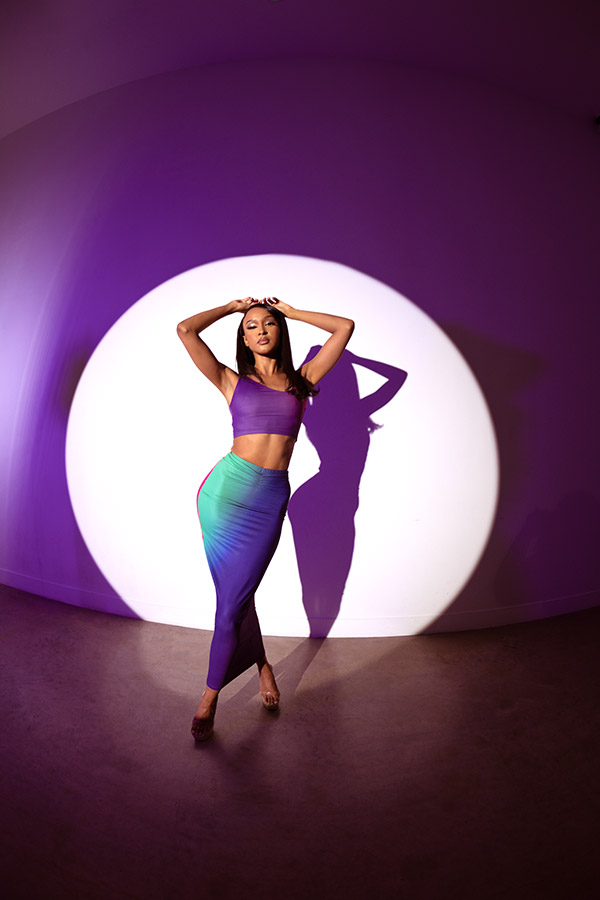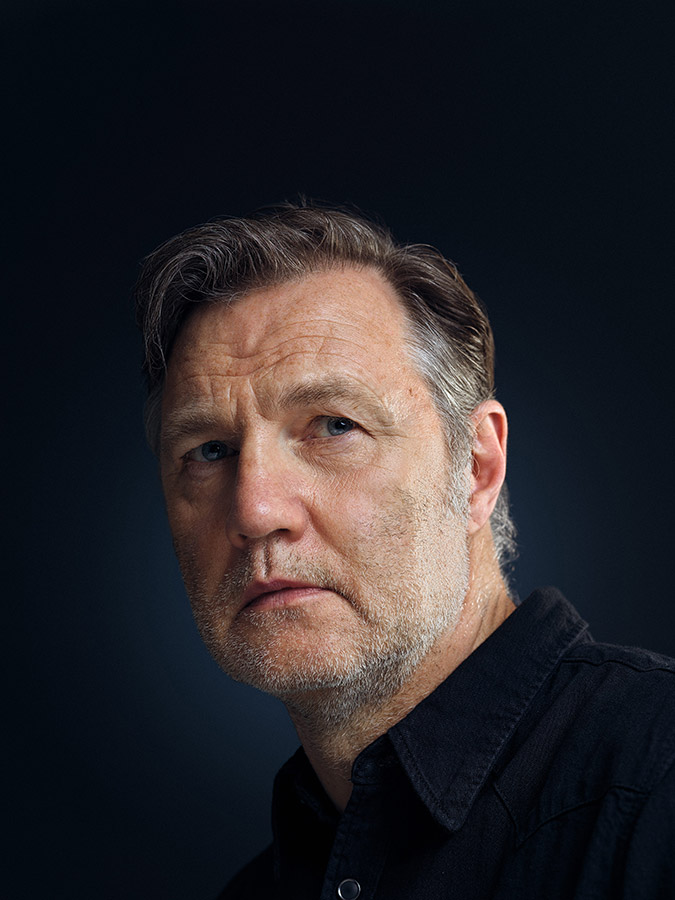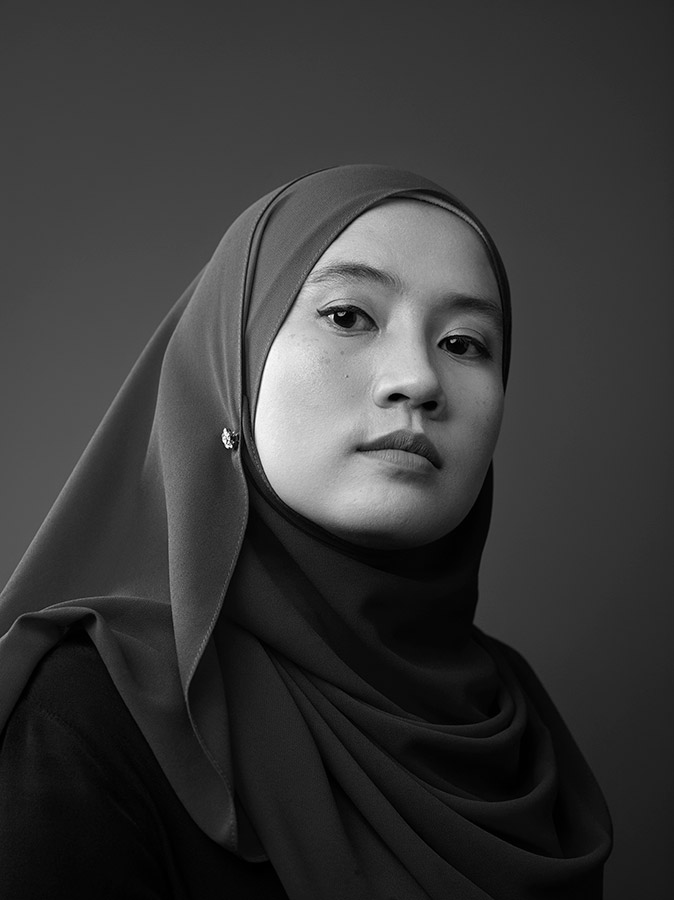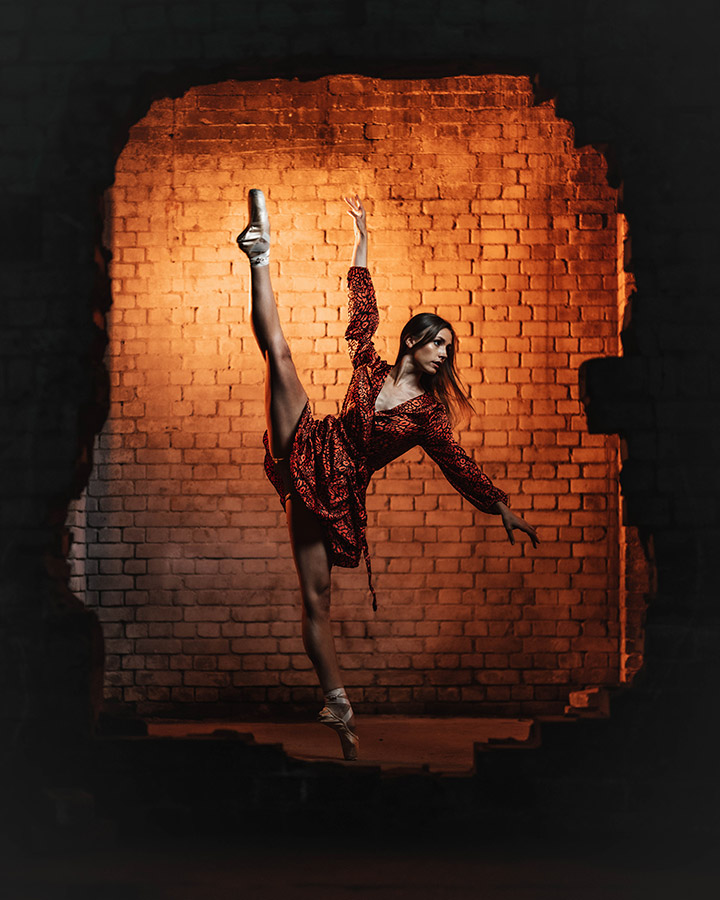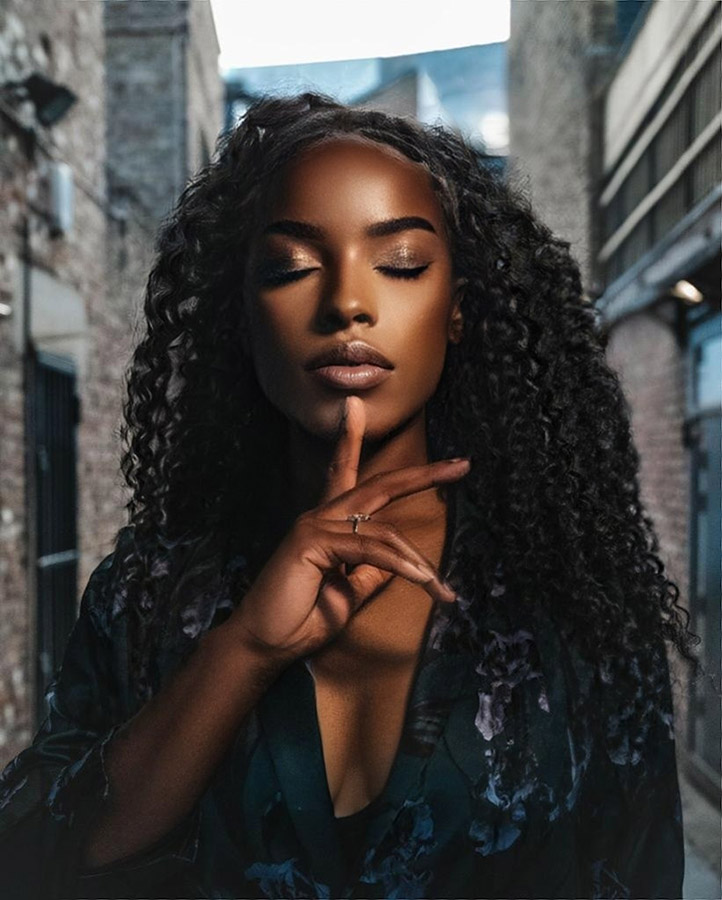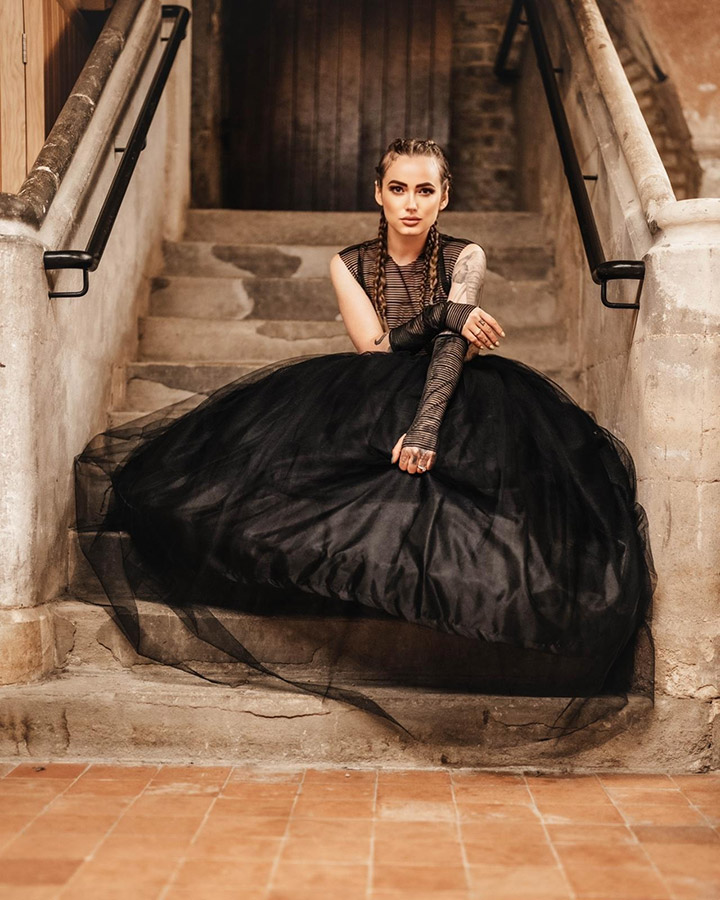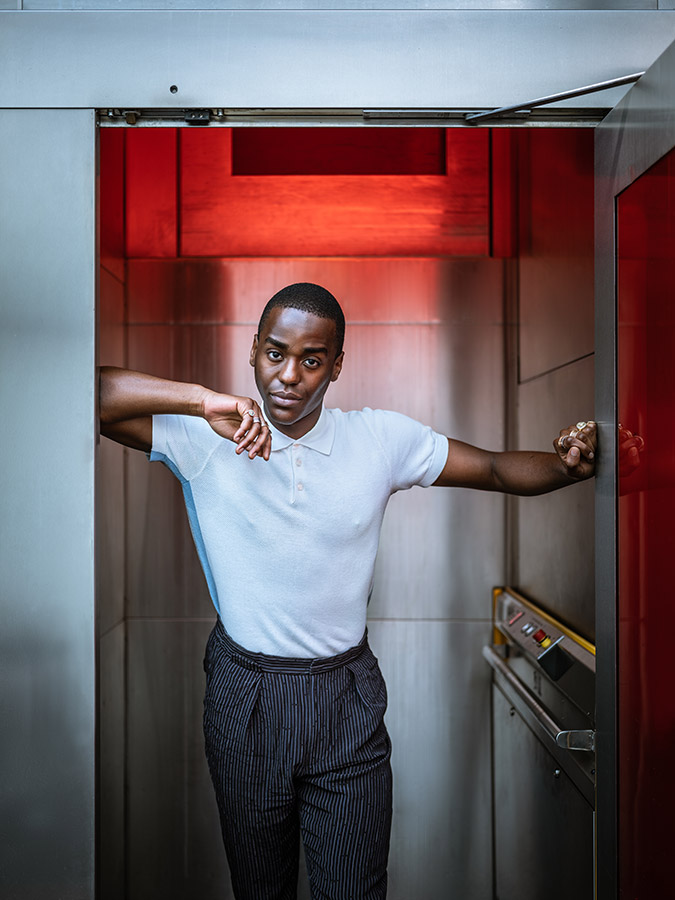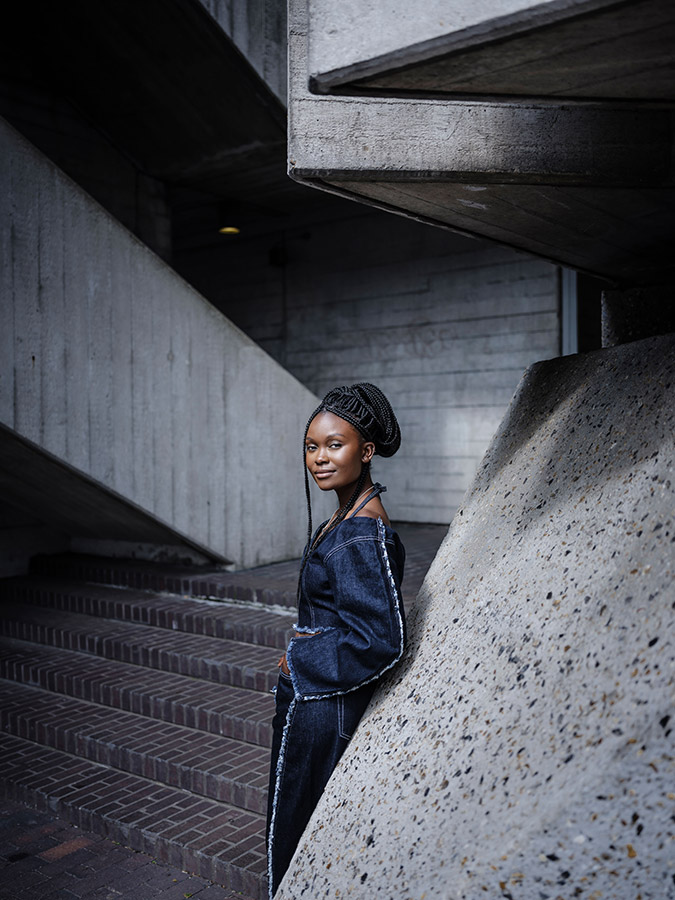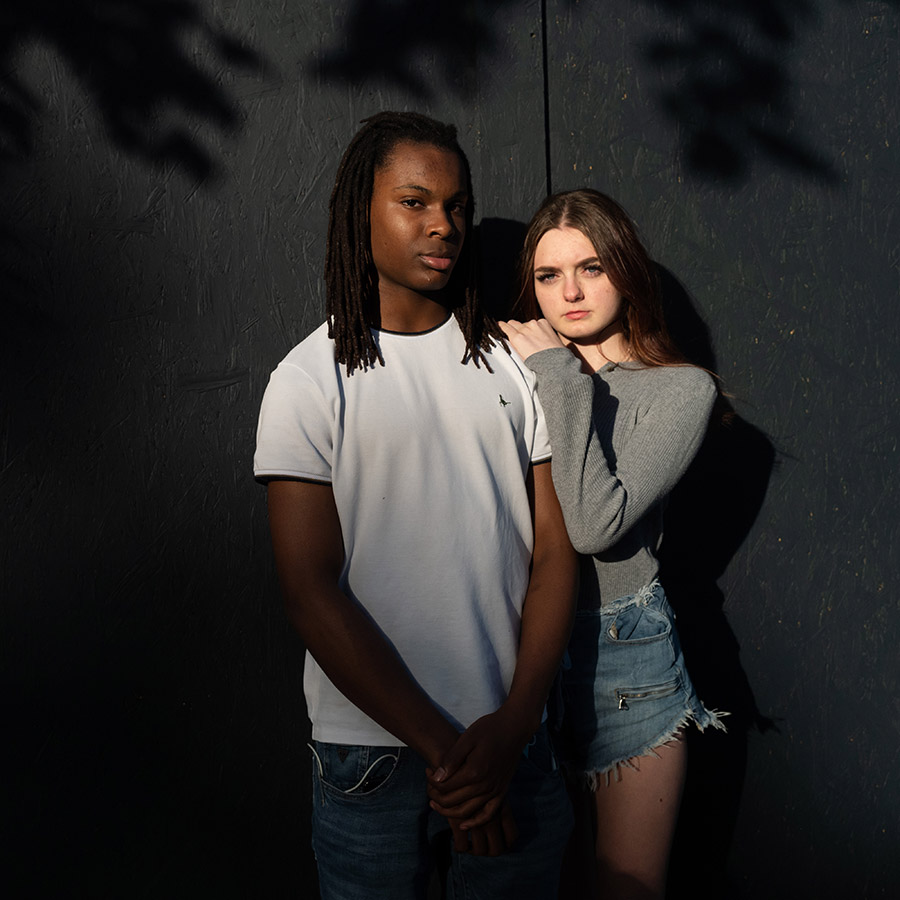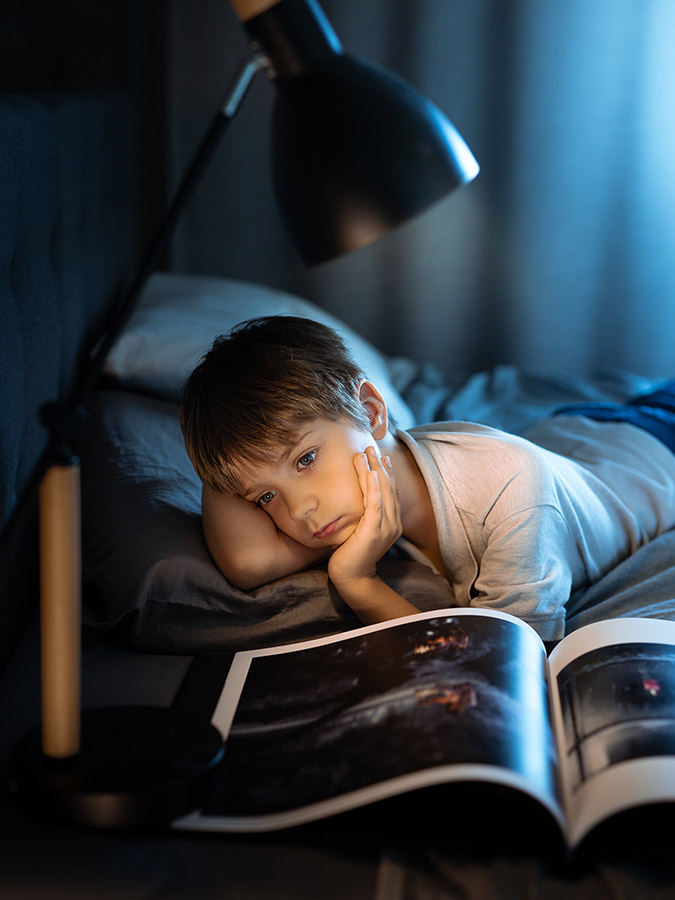Have you ever wondered how to capture an outstanding portrait? From how they plan to what they use, these award-winning photographers share tips on how to improve your portrait photography.
Portrait and Headshot Photography tips from Rory Lewis
“Described by the British Film Institute as one of the most versatile English actors of his generation, David Morrissey is noted for the meticulous preparation and research he undertakes for his roles – you may have seen him in the hit BBC drama series, Sherwood,” Rory explains.
“I captured David’s portrait for a new project entitled Selah, drawing inspiration from the Old Master painters such as Rembrandt, Caravaggio, Titian and Ribera. I have attempted to masterfully recreate the light, atmosphere and tones of classical portrait paintings.
“I like to call this position the hero shot; positioning the subject side on, looking across their shoulder. I am positioned slightly lower, thus making David look tall and prominent.”
Studio lighting can seem daunting if you have never tried it before, but as Rory explains, “It’s not nearly as scary as most people think. To my mind, it’s all about keeping things simple. Most of my portrait sittings are like this one, using just one or two lights. Here, I used two Profoto B10 heads, with two Small Octa Softboxes.
“One was behind at 220 degrees right, and the other was in front of David, again to the right at 140 degrees. I also used a Manfrotto 1×1 Skylight Rapid to the left to tone down the shadows.”
David was captured at 1/100 sec, f/7.1, ISO 100. “I never deviate from either f/5.6 or 7.1 in my portraits, using the medium format Hasselblad X1D II 50C camera,” adds Rory. “These apertures deliver great depth and detail.”
Rory Lewis’s top portrait photography tips:
- Find compelling subjects – “You are nothing without a compelling subject. Try creating a theme or project. This could be a member of the family who has a story to tell, or someone in your community.”
- Be inspired by fine art – “My style is influenced by Renaissance portraiture and ‘chiaroscuro’ – a technique which uses strong tonal contrasts between light and dark to model three-dimensional forms.” See our top fine art portrait photography tips
- Keep lighting simple – “As mentioned, most of my portrait sittings utilise just one or two lights. Try this simple set-up yourself – position one flash head with a shoot-through umbrella at a 45° angle to the model, at about six feet high. This creates a strong, hard, direct light from the side and above. I guarantee this will create vivid results.”
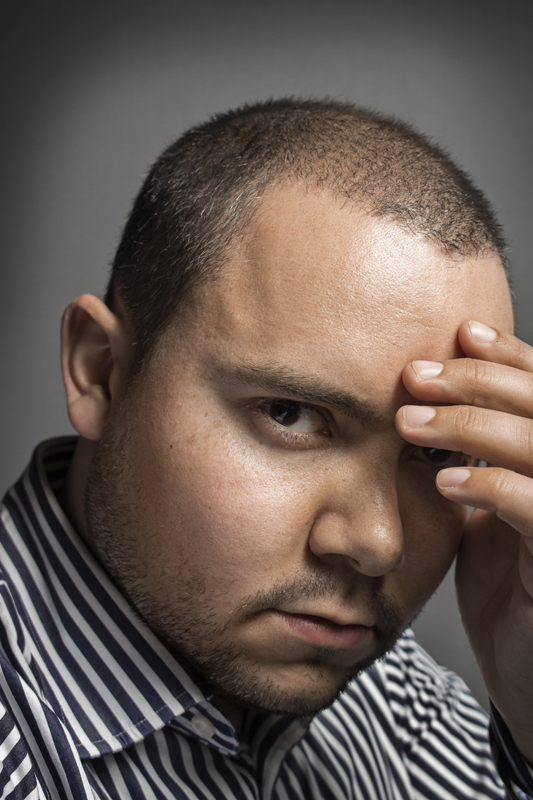
Rory Lewis won the Portrait of Britain award for four years in a row and is a National Portrait Gallery BAME artist. He also runs courses and mentorship programmes.
See more of Rory’s work on his website and Instagram.
Fashion and Editorial Portrait Photography tips from Gigi Umbrasaite
Luke Clark

“This shot of Luke Clark was taken in Greenwich, London, on a sunny day that had intermittent, crazy downpours. We ended up in a pub for shelter until the showers passed over. While we were sitting and waiting, I noticed the light coming through the window right next to our table and just decided to snap some portraits.
“I was shooting on an 85mm lens, so I needed to be far back from Luke, but just the end of the table was enough distance to frame him for a portrait. With enough light coming in and some shadows from being indoors, I decided to turn this shot black & white to give it a little more of a cinematic feel.
“I made minor adjustments to the exposure in Lightroom followed by minimal skin retouching (dodge and burn) to lighten up shadows under Luke’s eyes, nose and lips in Photoshop.”
Kateryna Zub
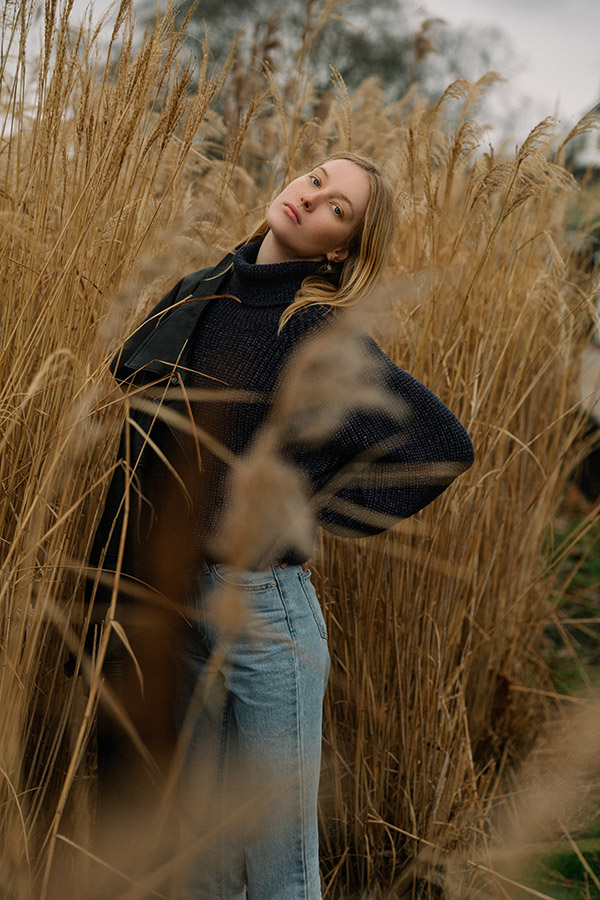
“This shot of Kateryna Zub was taken in Hyde Park, London. It was a gloomy day, but in this case, it was working well for us as it added to the mood. As always, I look for interesting backgrounds that will complement my subject. I spotted reed sweet-grass that was already dry and a golden colour that beautifully matched Kateryna’s hair, giving us lovely, earthy tones.
“I framed some of the grass just in front of my lens to add interest and create more depth. This also gave the appearance of a location of fields in the countryside; not the heart of London.
“I used Lightroom to apply a small amount of colour correction and tweaked the shadows and exposure. This was followed by some minor skin retouching in Photoshop. Kateryna’s skin didn’t needed much; minimal dodge and burn was enough to lift the shadows.”
Pelle Frederiksen
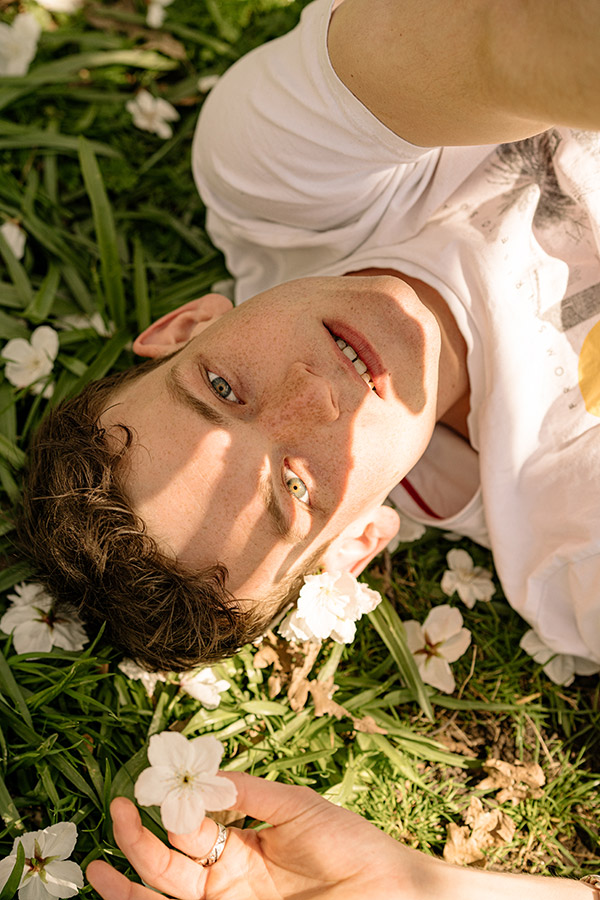
“This portrait of Pelle Frederiksen was taken in the Lancaster Gate area of Hyde Park in London. It was a bright, sunny day so the light was harsh which meant we had to find some shade. I spotted a beautiful tree that was covered in white blossom that I thought would be nice to include in the portrait. I wanted to capture some of the light peeking through the tree, so we decided to do a shot lying down on a bed of grass and white blossom that had fallen off the tree.
“I also made use of the shadow from Pelle’s hand that dropped right across his face helping to block the sun and keep his eyes open. This took quite a few attempts but I think we nailed the shot. I made minimal Lightroom exposure and colour correction followed by Photoshop dodge and burn. I like to keep my natural light portraits with as minimal editing as possible, always making sure my shots are 99% spot on when I take them.”
Gigi Umbrasaite’s top portrait photography tips:
- Cloudy mode: This is my favourite top tip to achieve warmer tones, especially shooting in England with weather being so unpredictable and often grey. By selecting the Cloudy White Balance mode on your camera, you can warm up your images and make your model look livelier and more youthful.
- Diffuse the light: As I mainly shoot outdoors, I find shooting on sunny days to be a little tricky without getting strong shadows, burnt-out highlights and squinty eyes. Always look for some shade and light bounce. In bright situations I like to look for lighter-coloured backgrounds so images can still look nice and bright but without the harsh light. If you have a spare hand or an assistant, you can always use a portable diffuser/reflector.
- Be precise and intentional: Treat your natural light portrait session like a film camera, where every shot counts. Take your time to compose your shot and make sure the lighting is just right before pressing the shutter. As soon as you get the shot, move from that pose, location or change the outfit for the next shot. This way you minimise your shutter count and speed up your time on set. Working in this way will also save you time later so you don’t need to go through thousands of images. Quality over quantity.
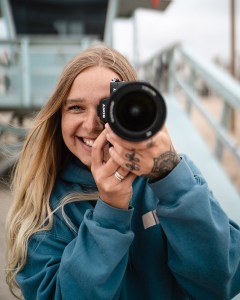
Gigi is a Lithuanian fashion and portrait photographer based in Brighton. She grew up in a family of photographers and started shooting from an early age. After finishing school in Lithuania, Gigi moved to study in England where her photography career took off. Now Gigi is working with magazines, fashion and commercial brands, and modelling agencies all over the world. She is also a member of the the UK Portraits team, part of Shooters. See www.gg-photo.com or @ggphotographyofficial
Fashion and Beauty Portrait Photography tips from Jade Keshia Gordon
WMNS
“This (below) was taken on a shoot for a fashion campaign for the spring/summer collection of clothes brand WMNS WEAR,’ recalls Jade. The theme of the campaign was ‘Euphoria’.
“The model, Lay, was placed close to a white wall in the studio. The wall was lit by two, colour-adjustable RGB LED panel lights placed at 45 degrees on either side of the model, which were set to bright purple. A white spotlight was then projected onto the model from the front and slightly to the left of the model.
“The effect of this was to create a strong, hard purple shadow in a white circle on the background. Jade took this shot using an EF 8-15mm f/4 L Fisheye on a Canon EOS R5, via the RF adapter, and used an exposure of 1/125sec at f/4 at ISO 320. Because she was shooting so close to the model, this made the placement of the spotlight quite tricky. We needed it to be as close to the front of the model as possible but without getting my shadow in the shot too.”
Jade Keshia Gordon’s top portrait photography tips:
- Experiment with spotlights – The use of a spotlight has created a visually striking image, enhanced by the use of coloured background lights which created the coloured shadow. “Spotlights like this one are expensive but you can get a similar effect with a digital or slide projector,” Jade advises. “They won’t be as bright but you can shoot at a higher ISO to compensate.”
- Try using a wide-angle lens – “Some people think you have to shoot portraits with short telephoto lenses but wIde-angles are very common in fashion photography. They’re great for when you want to accentuate the shape and style of a garment. I shot this using the 24-70mm lens too, but it didn’t have the same vibe as with the fisheye.”
- Use colour creatively – “Colourful backgrounds can really make a portrait ‘pop’ but you need to take care to ensure that they complement the subject’s skin tone and clothing rather than clashing with them. Use coloured walls or dedicated colour backdrops, or colour a white or grey wall using gels over your lights, or RGB LED lights with variable colours.”
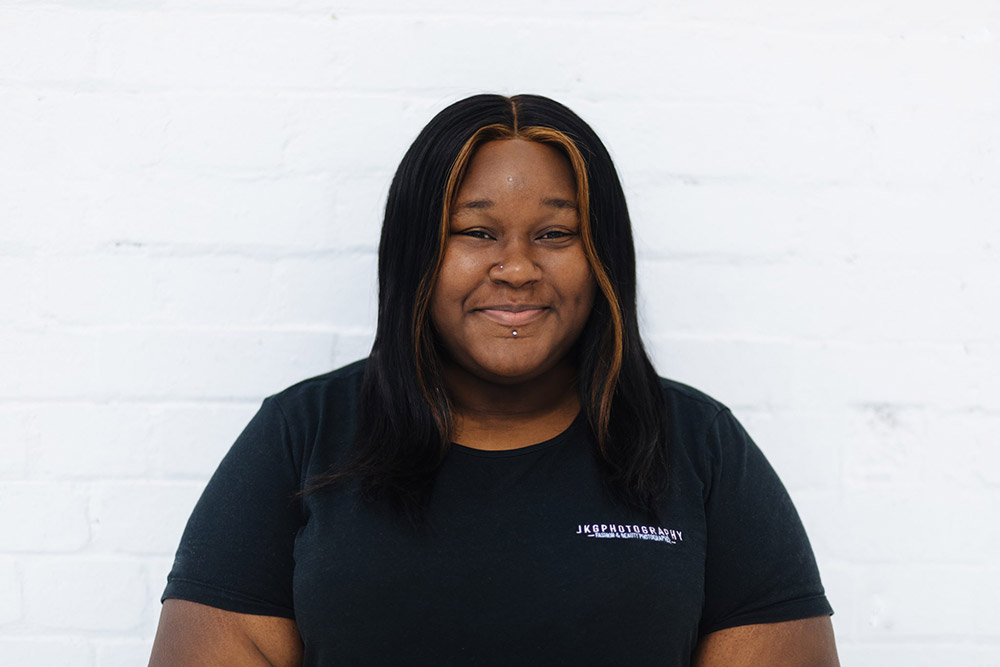
Jade Keshia Gordon is a London-based fashion and beauty photographer who has shot for the likes of Nike and Canon. Her work has appeared in magazines including Forbes and Elle.
See more of Jade’s work on her website and Instagram.
Model portrait photography tips from Darren Boyd
Athena
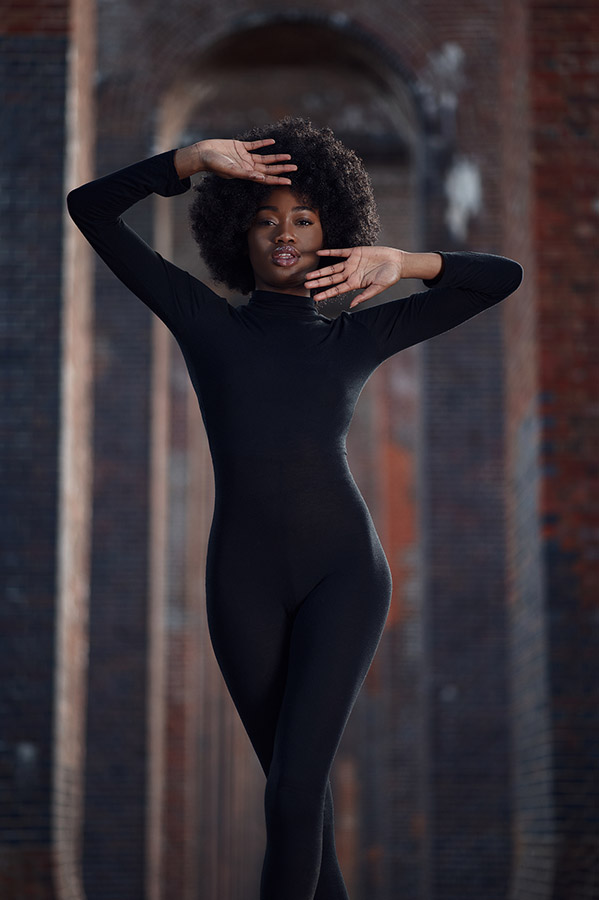
As I composed this portrait of Athena, I aimed to capture her strength and femininity. Using a low angle, I created a sense of height and power while still highlighting her natural beauty. To make Athena stand out even more, I utilised the power of bokeh to separate her from the background and draw the viewer’s attention to her. Using my trusty Nikon Z6 camera and 85mm f/1.2 lens, I captured every detail of Athena’s features, resulting in a stunning image that perfectly showcases her beauty and strength as a model. To enhance the shot, I used a single octagon softbox to create a soft, flattering light highlighting Athena’s left side.
Additionally, I carefully positioned her so that the sun backlit her body, adding depth and dimension to the image. This portrait is a true testament to the power of thoughtful lighting, composition, and creative photography techniques. I am incredibly proud of the result and thrilled to have captured Athena’s full range of beauty and strength in a single shot.
Stephen Manas
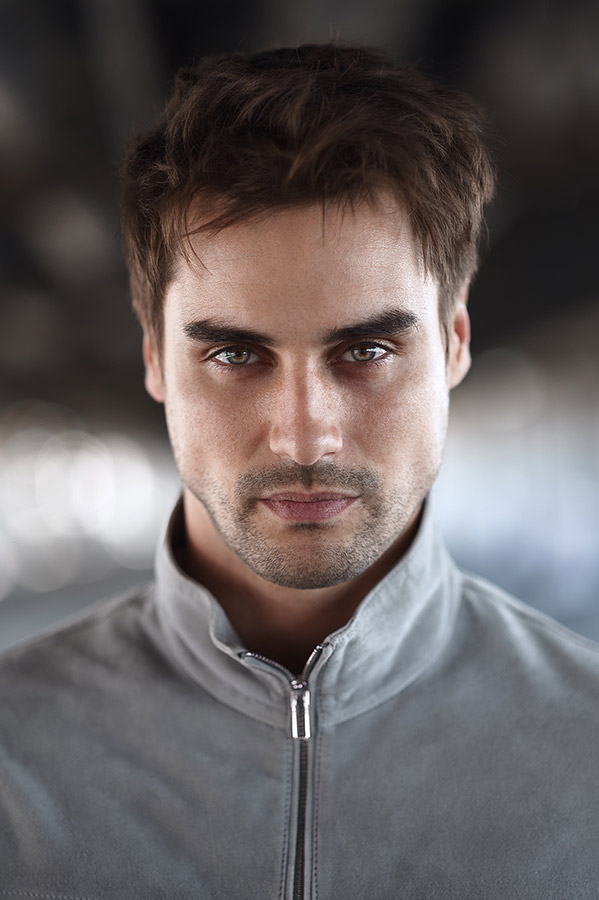
“In a London car park, I captured the essence of Stephen Manas, an actor from the Emmy-winning Apple TV series Ted Lasso, through a commissioned headshot that’s breathtaking. Using only natural light, I accentuated the contours of Manas’ face, creating a striking separation from the background with my Nikon 85mm f/1.8 lens and a powerful depth of field. But it was in post-processing with Affinity Photo on my trusty iPad Pro where I worked my magic.
“The eyes are the windows to the soul, and in Manas’ piercing gaze, I found a profoundly intimate and meaningful connection. I captured Manas’ unique essence in a captivating and unforgettable portrait by drawing the viewer in with his engaging stare. The final image is a testament to the power of photography to capture not just the subject’s likeness but also the very essence of their being. It’s a striking and dramatic portrait that leaves a lasting impression on anyone who beholds it.”
Massay

“As I arrived for my planned photoshoot with Courtney Massay, a talented male model, I was excited to capture his unique personality in the urban environment of Liverpool Street, London. As a photographer who loves to push the boundaries and create innovative and creative shots, I was determined to find a way to showcase Massay’s bold and confident vibe.
“We started the shoot with Massay sitting on the steps, and I immediately saw the opportunity to use the metal railings as a framing device. I wanted to create a gritty, urban feel reflecting his edgy and masculine style. As we continued the shoot, I played with different angles and perspectives to find the perfect shot to capture Massay’s unique energy and personality.
“Finally, the moment arrived, and I snapped the shot that would become the centrepiece of the shoot. The framing was perfect, with the metal railings adding an edgy and urban vibe that perfectly complemented Massay’s personality. The image captured his raw vitality and bold confidence, creating a powerful and unforgettable portrait that genuinely reflected his spirit. I was thrilled with the result and proud to have captured the essence of this dynamic and inspiring male model.”
Darren Boyd’s top portrait photography tips
- It’s in the eyes: Capturing details of the eyes is crucial in portrait photography. Use a wide aperture for a shallow depth of field and ensure the eyes are in sharp focus.
- Experiment: Don’t be afraid to shoot at different angles. Experimenting with angles can create a unique perspective and add variety to your portraits.
- Natural framing: Experiment with framing. Use objects in the environment to create a natural frame around your subject. This can add depth and draw attention to the subject. Try different aspect ratios for added visual interest.

Darren is an award-winning photographer based in London and Hampshire, specialising in hyper-realistic portraits that make a connective impact. Darren works with actors and models to create stunning and impactful imagery. To see more of his work, visit www.boydvisuals.com or @boydvisuals
Commercial Portrait Photography tips from Sam Nash
Ballerina
“This shot of dancer Kate Byrne was achieved using the Rotolight AEOS 2 in an indoor abandoned shaft studio which had multiple floors and shooting locations within it. The model was framed neatly within the bricks which I lit up with an orange filter chosen from the 2,500 digital filters that were available.
“At times, the colours chosen are purely aesthetic to match the wardrobe, as well as the ambience of the shoot. I set up another AEOS 2, set to 40% power, inside the new Rotolight P90 parabolic soft dome placed six feet from Kate to give a beautiful key light on her. I used a Sony Alpha 1 camera with a 50mm F1.2 GM lens.”
Kesha
“Kesha appeared in James Bond’s last outing, No Time to Die. This shot was achieved using just one Rotolight NEO 3. It was shot outdoors in an alley.
“Using continuous LED lighting was essential, as this shot was taken in the evening. A perfectly lit shot controls the shadows in the portrait, making a shot like this more visually interesting and dynamic. The chosen location set the mood and the model’s pose was strategic – it could have been more mundane had the model looked directly into the camera. I used a Sony A1 camera with a 50mm F1.2 GM lens.”
Black dress
“This shot, of model Katia Valerievna, was achieved using one Rotolight NEO 3, positioned 45 degrees from the model, during London Fashion Week.
“The NEO 3 was set at about 36% output. Time was of the essence, so I had to move quickly between shots as there were many people on location. By placing my model on the steps, it gave a 3D sense of depth to my subject, and it allowed the contrasting colours between the model’s dress and the environment to really pop and achieve a dusky, romantic feel to the image.
I used a Sony Alpha 1 camera with a 50mm F1.2 GM lens.”
Sam’s top portrait photography tips:
- Choosing locations – With outdoor shooting the choice of location is vital, but I rarely pre-plan as I find my creativity is heightened by exploring locations during a shoot. But do have a clear concept of the ambiance and general atmosphere that you want.
- Use LED lighting – The source of light is key in creating a successful portrait image. It sets the tone and mood. For me, continuous LED lights make the most sense with modern cameras. My Rotolight NEO and AEOS lights are powerful and the 16.7 million colours allow me to light my subject in various unique ways.
- Compose carefully – Perfecting your composition is the single most important skill in capturing the perfect portrait. Learn to master lines, depth, shapes, framing, and point of view; all help relay the message of the photograph. It is also what makes your image pop. Remove as many elements in a scene as you can to avoid clutter in picture. This keeps the shot simple so nothing distracts from your subject.
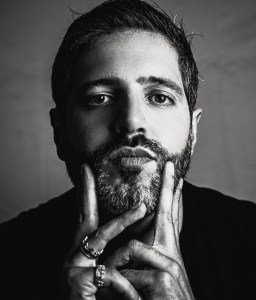
Sam Nash is a London-based portrait photographer who started out shooting events before progressing to commercial photography – shooting ad campaigns for magazines, retail, and lifestyle shoots. He now focuses solely on portrait and fashion photography as he found his true passion lies there.
See more of Sam’s work on his website and Instagram.
Creative portrait photography guidance from Therese Asplund
Empowered
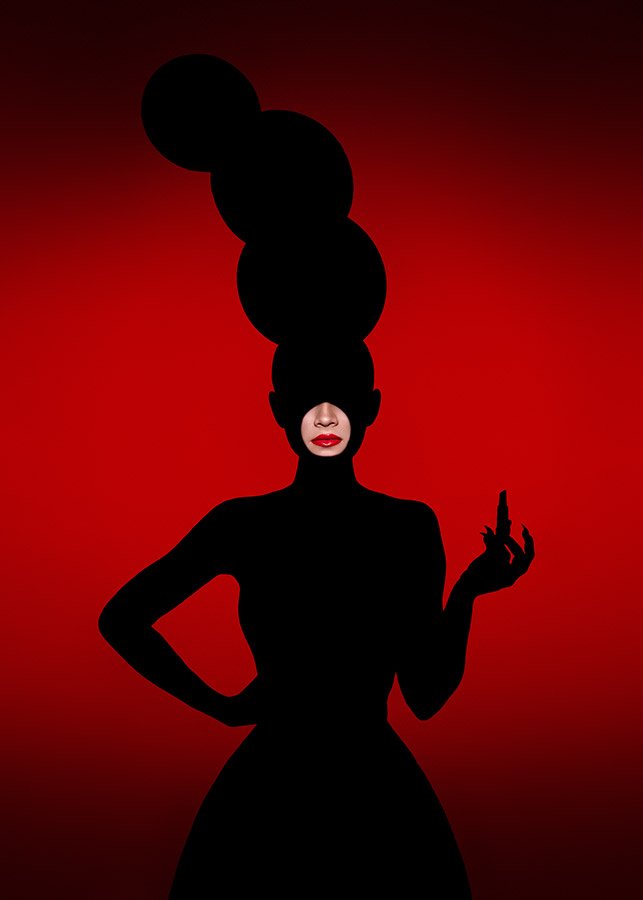
“I wanted to create an image that portrayed the feeling of confidence and beauty you sometimes feel just by putting on a red lipstick. By using a red backdrop lit with two Elinchrom ONE strobes with red gels attached and no light on the model, I created a wonderful silhouette to play with. The mouth area was lit by an Elinchrom FIVE with an optical snoot.
“To create shape, I used a dress with a lot of volume in the skirt, and paper plates to build the headpiece. Posing the hands and the fingers were very important to create the right character and I tried a lot of variations before I got the result I was after. The image is shot with Nikon Z 9 and a Nikkor Z 24-70mm f/2.8 lens. The model is Alice Vestman and I did the styling.”
Fisheye

“I love to create images with a lot of humour and play with words when giving them a title. This is Alice and her pet fish, Mr Raj. The idea for the image came from Alice complaining about how easy it was for her friends, who had cats, dogs, and horses, to get nice images with their pets. I love a challenge and came up with this idea so she could have an unforgettable portrait with her pet.
“The blue colour theme comes from the fish and the styling is inspired by the waves of the ocean and acrobatic swimmers. The lighting is one Elinchrom ELC1000 in a clam light set-up, centred up high, with a white reflective screen under to lift the shadows. The image is shot with a Nikon Z 9 and a Nikkor Z 24-70mm f/2.8 lens. The model is Alice Vestman and I did the styling.
Safe from the Waves

“During the Covid lockdown, I set myself a challenge to create the same fine art portraits that I normally shoot in the studio, but under water, using my studio flashes to capture the same painterly light. I struggled a lot with the lighting because as soon as it hit the surface of the water it spread in all directions, which made it hard to avoid too much light on the background.
“This was pretty much the only good image I got from my first session despite shooting for three hours. What finally did the trick was using a backlight as my main light and one gentle fill light to lift the shadows just a little bit. For the main light I used an Elinchrom ELB1200 to get maximum power and to be able to shoot with a small aperture to block out the ambient light. The fill is an Elinchrom ELB500. The story is that no matter how busy, scary, and loud the world is around us, under the surface everything is calm, comforting, and quiet.”
Therese Asplund’s top portrait photography tips:
- Be prepared: Have a plan set before the model arrives. This will get you off to a great start and saves the model waiting around. Test the light and ensure you have the right settings on your camera. If you can, use yourself or an assistant to stand in and test the lighting. That way you can tweak it without any pressure to ensure the shoot runs smoothly.
- Focus all your attention on the model: This is especially important when shooting people that are not used to being in front of the camera. It is crucial that you make them feel safe and comfortable and for that they often need your full attention. Give direction, be encouraging and make sure to have a lot of eye contact.
- Light, light, light!: Photography means painting with light and to get a great portrait you need to understand how different kinds of light affect the character of the face. Whether you shoot with natural or artificial light always choose it with care. Sometimes shifting your position, or the model’s, by just a few inches gives you a whole new light with a completely different feel.

Therese is an award-winning Swedish portrait photographer who loves working with people. Whether she is in the studio shooting portraits, out doing commercial work, or working on one of her own art projects, it is always with the same passion and dedication. She is also an ambassador for Nikon and Elinchrom. To see more of her work, visit www.thereseasplund.com and on Instagram @photographerthereseasplund
Tips for portraits of influential people from Peter Searle
Ncuti Gatwa
This lift at the BFI, London, was the perfect location for this portrait shoot with actor Ncuti Gatwa because the red contrasted nicely with the daylight coming in through a glass entrance lobby which was supplemented by a huge backlit panel of strip lights. Fortuitously the setting is in keeping with his forthcoming role as the new Doctor Who.
I shot Ncuti with a Fujifilm GFX 50S camera and 63mm lens. Settings were 1/100sec at f/2.8, ISO 160.
Runyararo Mapfumo
“Runyararo is the director of the hugely successful Netflix show, Sex Education. For this portrait I placed her in the shade under an overhang of concrete architecture. Soft light bounced off buildings behind my back
I shot Runyaro with a Fujifilm GFX 50S camera and 45mm lens. Settings were 1/500sec at f/8, ISO 160.”
Prya Kansara
“Prya’s TV credits include Bridgerton and Polite Society. I photographed her at BFI, London. With the table at just the right distance from the large windows in the BFI, she is exposed perfectly, but so are the warm illumination of the bar lights.
“I shot Prya with a Fujifilm GFX 50S camera and 45mm lens. The settings were 1/30sec (on a tripod) at f/2.8, ISO 320.”
Peter Searle’s top portrait photography tips:
- Use indirect light – Look for directional indirect daylight. Avoid direct sunlight. The light should preferably be at your back and hitting the subject approximately horizontally, or at least not a high angle, which creates shadows under the eyes. A good example of this kind of light is sunlight bouncing off a white wall. The wall becomes a giant soft box behind your back.
- Choose the background – Find a background that has that kind of light falling on it and which most interests you or suits the subject. I personally like geometrical shapes and the texture of concrete but I also look out for warm tungsten-lit backgrounds to contrast with cooler daylight temperatures or vice versa.
- Balancing exposure – Balance the exposure on the subject and on the background by moving the subject towards the oncoming light or away from it. For example, imagine a subject standing just inside a garage door; the further in you go with your subject, the brighter the back of the garage will be.
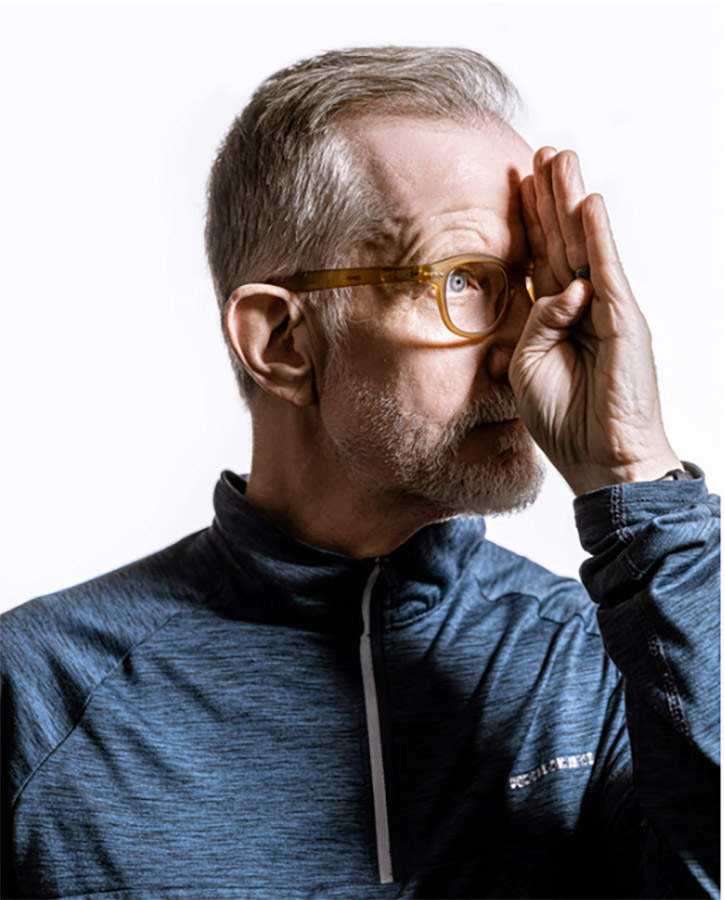
Peter Searle makes portraits of some of the most influential people in British society: Prime Ministers, CEOs, opera stars and generals. He is London-based but shoots all over the world, and has work in the permanent collection of The National Portrait Gallery. Although Peter uses flash sometimes, here are his tips for working with available light.
See more of Peter’s work on his website and Instagram.
Street Portrait tips from Robert Huggins
Couple in Hackney
“I asked this couple to move in to the light slightly, and thought this was an ideal background. You can’t move around people too much or they get bored, but I sometimes ask subjects to adjust their hands. I shot this on a Leica SL. There was minimal editing apart from a square crop, which I like for this kind of portrait.”
Couple in cafe
“Most of my photos are of interesting-looking strangers or intriguing situations. The background and setting are crucial, and I work all this out before asking the person for a shot. This couple were embracing in a cafe as I passed, which caught my eye, so I asked them to recreate this for the shot. It turned out the guy had just declared his love for the first time!
“My work is more about informal portraits of people rather than street candids, but I don’t want to have to re-arrange the shot at a later date. I like the spontaneity of the moment. I find people are generous with their time, but only for about three or four shots, and then they lose interest – so I have to work fast. This was shot on my Leica SL2 and a 35mm Summicron lens.”
Hackney market
“I explained to this burka-clad lady that I really liked her eyes. I wanted to make sure that as a Muslim woman, she was okay with being photographed, and she also phoned her husband to check (sometimes very orthodox Muslim people are fine about being photographed, sometimes not).
“Then I asked her to move against this background, as it was a busy market with lots of distractions. There is often humour in my images, and I liked the rug she was holding – an interesting juxtapositon. The light was very bright that day so I had to do more editing than usual. Again, shot on the SL2 with 35mm lens.”
Robert Huggins’ top portrait photography tips:
- Subject first – Don’t get hung up on equipment or getting a technically perfect shot. My photography is much more about the subject, not the gear, but I like the idea of having a high- precision tool, which is why I use the Leica SL2. The Summicron 35mm lens is perfect for my work.
- Work fast – I adjust the aperture, but otherwise am happy to shoot in automatic modes. I need to work fast and don’t have time to adjust lots of settings.
- Editing – I keep editing to the minimum – one of the great things about the SL2 is it seems to make framing easier. As well as cropping, I might also push the colours and highlights and contrast etc in Lightroom.
- Suck it up – You should get used to rejection if strangers refuse to be shot – don’t take it personally. It’s like asking people out when you are a teenager! I tell people about my Instagram page rather than giving them my card, as they can see what my work’s about.

Robert Huggins is a roving street portrait photographer living in north-east London. He focuses on impromptu street portraits, particularly around the East End. Robert’s images have been published widely and appear in several editions of Portrait of Britain and Portrait of Humanity. See Instagram @rafhuggins
See more of Robert’s work on his Instagram.
Check out our guide to Street Photography.
Child Portraits by Iwona Podlasińska
Adam, 2017
“I asked my son Adam, who was just three then, to look at the cakes through the glass, which he only did for three seconds – enough for me to get the shots.
“The portrait was taken entirely in the natural ambient light of the bakery, with light also coming in from the case. At the time, I was shooting with the Sony A7, using an 85mm f/1.4. Editing involved removing a distracting price tag from the bottom left of the image and then just doing the usual tweaks in Lightroom to boost contrast etc.”
Adam on the bed
“Adam was seven when I took this portrait (below). I was preparing for a photo shoot and wanted to test some new ideas. So I brought an album for him to look at, and a desk lamp. I didn’t give him any instructions other than to lie down (Adam is very relaxed in front of the camera if he is comfortable).
“The lamp was not enough to light up Adam’s face, and the only window in the room was behind him on the right, so I added a small LED video light in front of him. I used a warm setting, around 3000K. The image was shot on a Sony A7 III with a 50mm f/1.4 lens. The Lightroom edits involved some exposure corrections and colour grading to emphasise the lovely colour harmony.”
Jan, Kraków Market
“This shows my older son Jan, who was four then, feeding pigeons on the square. Like most of my images of my kids, the shot wasn’t planned. As Jan fed the pigeons, it started to rain, and it was quite technically challenging because I was shooting with a manual 85mm f/1.4 lens on a Sony A7.
“Everything came through sharp, however. The light was entirely natural and I edited the image in Lightroom and Photoshop – I cropped the original image from the right and added a part of another image on the left to improve the composition (initially, the frame would end right behind the pigeon’s wings on the left). Then I also colour graded the image to get that orange-blue complementary harmony.”
Iwona Podlasińska’s top portrait photography tips:
- The light comes first – Look for attractive light first, and then think about how to get your subject in that light.
- Don’t force it with kids – Never force children to pose. Let them play and be themselves – you will get better, more natural-looking poses this way, and the kids won’t hate you and your camera!
- Don’t rely on editing – Pay attention to the background. Shallow depth of field can help with background distractions but if necessary, look for another location – Photoshop is still not great when it comes to blurring-out backgrounds in a convincing way.

Based in Kielce, Poland, Iwona Podlasińska specialises in child portraits and is an expert in colour grading. She’s in high demand, despite only starting out in 2013, and travels around the world teaching, as well as creating online tutorials. Her latest book, Dreamy Childhood Portraits, was published in 2021.
See more of Iwona’s work on her website and Instagram.
Get started with portrait photography here.
Need more portrait photography advice? Check these out:
- Best cameras for portrait photography
- How to take portraits on a smartphone
- The best lenses for portrait photography
- Better portraits on a budget
- How to Shoot Portrait Photos at Home
- How to take really beautiful fashion portraits

